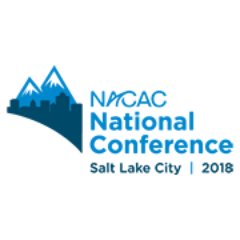You have /5 articles left.
Sign up for a free account or log in.
SALT LAKE CITY -- When supporters of test-optional admissions planned Thursday's session at the annual meeting here of the National Association for College Admission Counseling, the time peg was that 2019 will mark the 50th year since Bowdoin College dropped a requirement that all applicants submit SAT or ACT scores. But much of the excitement was about more current developments. Attendees noted the decision of the University of Chicago to go test optional this year, for example. Colby College announced such a decision this week. So did Rosemont College.
 But even as several hundred gathered here to discuss the test-optional movement, news about the University of California -- which has not made a decision on the issue -- captured attention. The university system's campuses receive more than 200,000 applications a year.
But even as several hundred gathered here to discuss the test-optional movement, news about the University of California -- which has not made a decision on the issue -- captured attention. The university system's campuses receive more than 200,000 applications a year.
This week, faculty leaders announced that they were starting a study on whether admissions testing adds value to the admissions process. The study was requested by Janet Napolitano, the system's president. Napolitano said that a review was needed in light of the "unprecedented growth" in applications.
At least one member of the University of California Board of Regents is pushing for the system to drop the requirement. Eloy Ortiz Oakley, chancellor of the California Community Colleges, said via email, "Research continues to mount that demonstrates the poor predictive quality of standardized admissions and placement exams. Scores on the SAT and ACT more closely correlate with wealth rather than college readiness and has a disproportionate impact on low-income students and students of color."
The session here focused on data and success stories with going test optional and the growing numbers of colleges dropping testing requirements. (The College Board declined a request from Inside Higher Ed to comment on the session. Here is an article about a book published this year, by authors with ties to the College Board, that outlines the organization's opposition to test-optional policies.)
Robert Schaeffer, of FairTest: the National Center for Fair and Open Testing, opened the session with statistics:
- 1,022 four-year colleges are now test optional. While testing advocates note that many of those colleges are not competitive in admissions, Schaeffer said that 321 of those colleges are ranked by U.S. News & World Report as being in the "top tiers" for their sector.
- Among liberal arts colleges ranked in the top 100 by U.S. News, more than half are test optional.
- More than half of four-year colleges in the Northeast (defined as New England, New York and New Jersey) are now test optional.
Decades of Experience
Whitney Soule, dean of admissions and financial aid at Bowdoin, said the experience of her college shows that a highly competitive college can have consistent success at admitting students without test scores. Since the early 1980s, applications have gone up at the college from about 2,500 to more than 9,000. During that time, the share of students who submit test scores has remained relatively stable, at between two-thirds and three-quarters of the class.
As the college has become more competitive in admissions, she said, Bowdoin has regularly conducted tests to see if admissions choices made without tests are as accurate at predicting college success as are those where test scores are considered. There has never been a difference, she said.
The top factors in admissions decisions, she said, are the high school transcript and the high school profile, Soule said. Those factors allow the college to see academic preparedness and also how the applicant took advantage of opportunities available at a given high school.
Soule said she is asked by some applicants and parents if they can share test scores and find out "if they should submit," but she said she doesn't answer those questions. The reason, she said, is that committees reviewing applicants don't stop for a second when reviewing someone without scores.
"We don't wonder what's missing," she said, "because we have enough."
Expanding the Pool at WPI
Bowdoin was typical of the colleges that first went test optional in that it was a relatively small liberal arts college. Andrew B. Palumbo, dean of admissions and financial aid at Worcester Polytechnic Institute, noted that WPI was the first national science and technology-focused university to drop the requirement when it did so in 2007. The shift, he said, sent a message to groups that might have not considered WPI in the past that they would be welcomed.
Since then, the size of the student body has increased by 41 percent, while female enrollment has gone up 81 percent and black and Latino enrollment have increased by 156 percent.
Palumbo stressed that test-optional policies shouldn't be viewed in isolation, but as part of a commitment to help those admitted.
He noted, for example, that those who do not submit scores are more likely than those who do submit scores to face academic distress (such as being placed on probation) in their first year, 13 percent versus 7 percent.
But he noted that graduation rates show the two groups succeed at the same levels. '"To me this says that WPI takes a chance on students and they may struggle, but we are a great environment for those students," Palumbo said.
Focus on Mission at DePaul
Jon Boeckenstedt, associate vice president for enrollment management and marketing at DePaul University, said that colleges considering a move to test optional (as Inside Higher Ed's survey of admissions directors indicated many are) need to be prepared for pushback. He noted that most faculty members have a history of success with standardized tests. And he said that competitive colleges tend to value standardized tests in that "there are few false positives." In other words, it's hard to have few capabilities and score high.
But he said the real question should be focused on mission. He noted that DePaul has as part of its official mission the goal of serving those for whom college might not otherwise be a possibility. And he walked through the university's current student body: 32 percent are first generation, 29 percent are eligible for Pell Grants, 26 percent are from underrepresented minority groups and 15 percent are from the city of Chicago. More than half (57 percent) of all students are in at least one of those categories.
"What we found is that the students we were taking a chance on" before dropping a test requirement "were doing very well." So that raised the question of why they were being required to submit test scores that might have discouraged them from applying or the university from admitting them, Boeckenstedt said.
"There's a point you start to feel disgusted with yourself," he said, for referring to a student by his or her test score.




